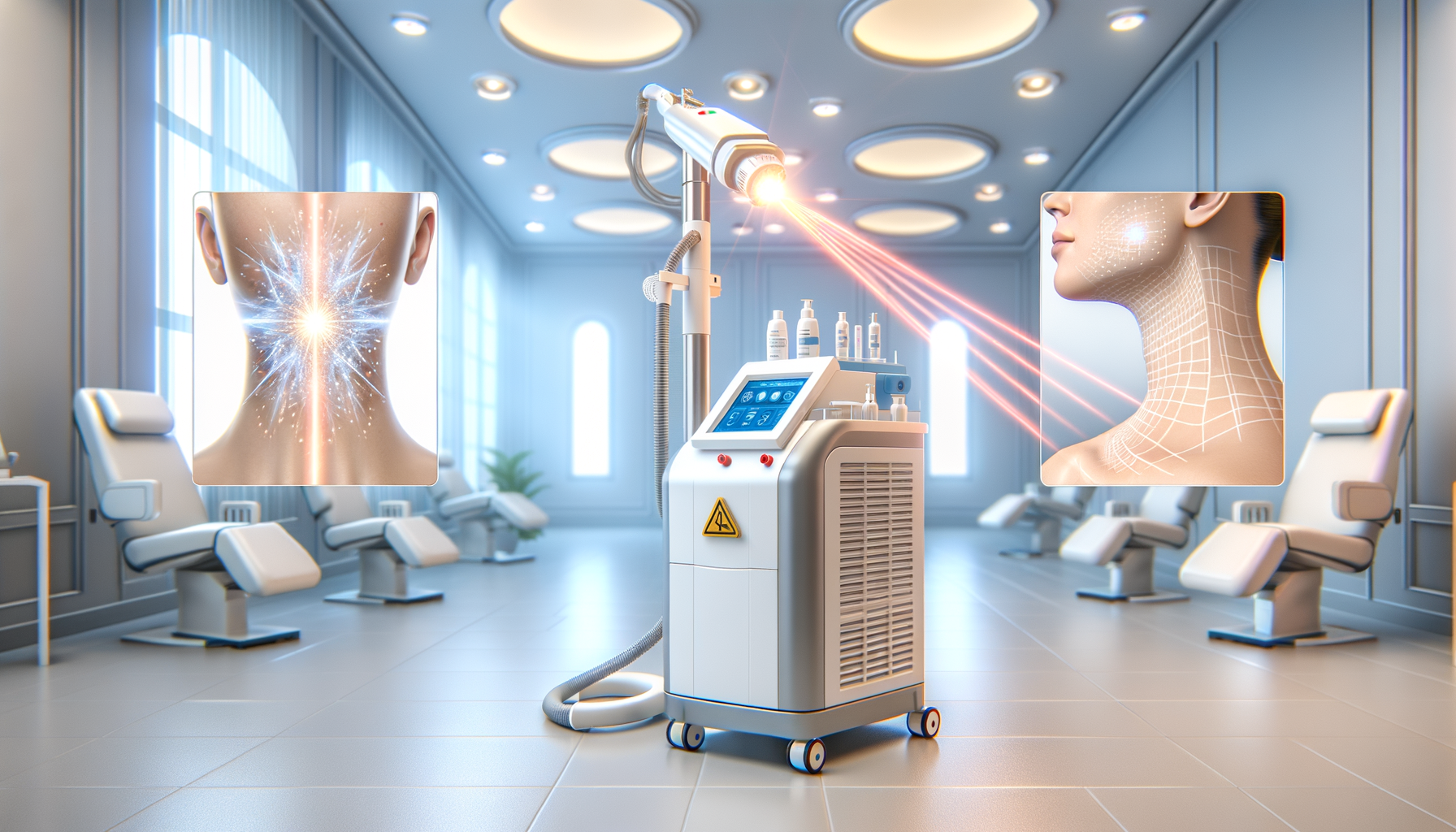
Exploring the World of Laser Skin Treatment: A Comprehensive Guide
Understanding Laser Skin Treatment
Laser skin treatment is a groundbreaking approach in dermatology, utilizing focused light technology to address a myriad of skin issues. From reducing wrinkles to treating acne scars, this method has become a popular choice for many seeking non-invasive skin rejuvenation. At its core, laser treatment involves the use of concentrated beams of light that penetrate the skin’s surface to stimulate collagen production or remove unwanted skin layers. This results in a smoother, more even skin tone over time.
There are various types of laser treatments available, each designed to target specific skin concerns. Some of the most common include:
- Fractional Lasers: These are used for treating sun damage, acne scars, and fine lines by targeting small areas of the skin.
- Carbon Dioxide Lasers: Known for their precision, they are often used for deeper skin resurfacing.
- Pulsed-Dye Lasers: These are effective for reducing redness and treating vascular lesions.
The choice of laser depends on the individual’s skin type, the condition being treated, and the desired outcome. Consulting with a qualified dermatologist is crucial to determine the most suitable option.
Benefits of Laser Skin Treatment
Laser skin treatment offers a plethora of benefits, making it a sought-after procedure in the realm of cosmetic dermatology. One of the most significant advantages is its ability to effectively treat a wide range of skin conditions, from pigmentation issues to deep wrinkles. The precision of laser technology allows for targeted treatment, minimizing damage to surrounding tissues and reducing recovery time.
Additionally, laser treatments can stimulate collagen production, leading to firmer and more youthful-looking skin. This is particularly beneficial for individuals looking to combat the signs of aging without undergoing invasive surgery. The results are often long-lasting, with many patients experiencing improvements that continue to develop over several months.
Another benefit is the minimal downtime associated with most laser procedures. Unlike surgical options, laser treatments typically require only a short recovery period, allowing patients to quickly return to their daily activities. This convenience, coupled with the effective results, makes laser skin treatment an attractive option for many.
Potential Risks and Considerations
While laser skin treatment offers numerous benefits, it is not without potential risks and considerations. As with any medical procedure, there are inherent risks that need to be carefully evaluated. Common side effects include redness, swelling, and temporary discomfort, which generally subside within a few days. However, more serious complications such as scarring or changes in skin pigmentation can occur, particularly if the procedure is not performed by a skilled professional.
It is crucial for individuals considering laser treatment to have a thorough consultation with a licensed dermatologist. This helps ensure that the chosen treatment aligns with their skin type and specific concerns. Patients should also disclose any medical history, including previous skin treatments, to avoid adverse reactions.
Moreover, individuals should be aware that multiple sessions may be required to achieve the desired results, depending on the severity of the skin condition being treated. This can be a significant consideration in terms of time and financial investment.
Comparing Laser Treatment to Other Skin Procedures
When considering skin rejuvenation options, laser treatment is often compared to other procedures such as chemical peels and microdermabrasion. Each method has its unique advantages and is suited for different skin concerns. Chemical peels, for instance, use acids to exfoliate the skin, which can be effective for treating superficial blemishes and uneven skin tone. However, they may not be as effective as lasers for deeper scars or wrinkles.
Microdermabrasion, on the other hand, involves physically exfoliating the skin to remove dead cells and promote new cell growth. While this method is gentle and suitable for sensitive skin, it may require more frequent treatments to maintain results compared to laser procedures.
Laser treatments stand out for their precision and ability to target deeper layers of the skin. They can address a wider range of issues, from pigmentation to vascular lesions, with more significant and long-lasting results. Ultimately, the choice between these treatments depends on individual skin needs, desired outcomes, and professional advice.
Preparing for a Laser Skin Treatment
Preparation is key to maximizing the benefits of laser skin treatment and minimizing potential risks. Before undergoing the procedure, patients should follow specific guidelines provided by their dermatologist. This often includes avoiding sun exposure and certain skincare products, such as retinoids, for a few weeks prior to treatment.
Patients may also be advised to stop taking medications that increase bleeding risk, such as aspirin, to prevent complications during the procedure. Hydration is essential, so drinking plenty of water in the days leading up to the treatment is recommended to keep the skin supple and aid in recovery.
On the day of the procedure, patients should arrive with a clean face, free of makeup and skincare products. This ensures that the laser can penetrate the skin effectively. Understanding and adhering to these preparatory steps can greatly enhance the overall experience and results of laser skin treatment.